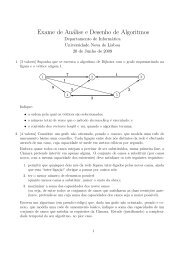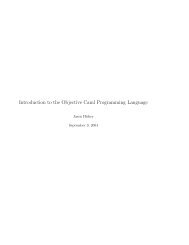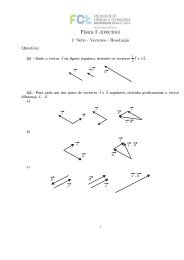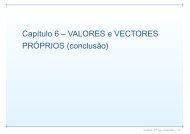Security Articles from Wikipedia
Security Articles from Wikipedia
Security Articles from Wikipedia
You also want an ePaper? Increase the reach of your titles
YUMPU automatically turns print PDFs into web optimized ePapers that Google loves.
DiffieHellman key exchange 41<br />
Notes<br />
[1] Synonyms of Diffie–Hellman key exchange include:<br />
• Diffie–Hellman key agreement<br />
• Diffie–Hellman key establishment<br />
• Diffie–Hellman key negotiation<br />
• Exponential key exchange<br />
• Diffie–Hellman protocol<br />
• Diffie–Hellman handshake<br />
[2] http:/ / www. comsoc. org/ livepubs/ ci1/ public/ anniv/ pdfs/ hellman. pdf<br />
[3] http:/ / www. google. com/ patents?vid=4,200,770<br />
[4] http:/ / buchananweb. co. uk/ security02. aspx<br />
References<br />
• Dieter Gollmann (2006). Computer <strong>Security</strong> Second Edition West Sussex, England: John Wiley & Sons, Ltd.<br />
• The possibility of Non-Secret digital encryption (http:/ / cryptocellar. web. cern. ch/ cryptocellar/ cesg/ possnse.<br />
pdf) J. H. Ellis, January 1970.<br />
• Non-Secret Encryption Using a Finite Field (http:/ / www. cesg. gov. uk/ publications/ media/ secenc. pdf) MJ<br />
Williamson, January 21, 1974.<br />
• Thoughts on Cheaper Non-Secret Encryption (http:/ / www. fi. muni. cz/ usr/ matyas/ lecture/ paper3. pdf) MJ<br />
Williamson, August 10, 1976.<br />
• New Directions in Cryptography (http:/ / citeseer. ist. psu. edu/ viewdoc/ summary?doi=10. 1. 1. 37. 9720) W.<br />
Diffie and M. E. Hellman, IEEE Transactions on Information Theory, vol. IT-22, Nov. 1976, pp: 644–654.<br />
• Cryptographic apparatus and method (http:/ / www. google. com/ patents?vid=4200770) Martin E. Hellman,<br />
Bailey W. Diffie, and Ralph C. Merkle, U.S. Patent #4,200,770, 29 April 1980<br />
• The History of Non-Secret Encryption (http:/ / www. cesg. gov. uk/ site/ publications/ media/ ellis. pdf) JH Ellis<br />
1987 (28K PDF file) ( HTML version (http:/ / www. jya. com/ ellisdoc. htm))<br />
• The First Ten Years of Public-Key Cryptography (http:/ / cr. yp. to/ bib/ 1988/ diffie. pdf) Whitfield Diffie,<br />
Proceedings of the IEEE, vol. 76, no. 5, May 1988, pp: 560–577 (1.9MB PDF file)<br />
• Menezes, Alfred; van Oorschot, Paul; Vanstone, Scott (1997). Handbook of Applied Cryptography Boca Raton,<br />
Florida: CRC Press. ISBN 0-8493-8523-7. ( Available online (http:/ / www. cacr. math. uwaterloo. ca/ hac/ ))<br />
• Singh, Simon (1999) The Code Book: the evolution of secrecy <strong>from</strong> Mary Queen of Scots to quantum<br />
cryptography New York: Doubleday ISBN 0-385-49531-5<br />
• An Overview of Public Key Cryptography (http:/ / dx. doi. org/ 10. 1109/ MCOM. 2002. 1006971) Martin E.<br />
Hellman, IEEE Communications Magazine, May 2002, pp:42–49. (123kB PDF file)<br />
External links<br />
• Oral history interview with Martin Hellman (http:/ / www. cbi. umn. edu/ oh/ display. phtml?id=353), Charles<br />
Babbage Institute, University of Minnesota. Leading cryptography scholar Martin Hellman discusses the<br />
circumstances and fundamental insights of his invention of public key cryptography with collaborators Whitfield<br />
Diffie and Ralph Merkle at Stanford University in the mid-1970s.<br />
• RFC 2631 – Diffie–Hellman Key Agreement Method E. Rescorla June 1999.<br />
• Summary of ANSI X9.42: Agreement of Symmetric Keys Using Discrete Logarithm Cryptography (http:/ / csrc.<br />
nist. gov/ encryption/ kms/ summary-x9-42. pdf) (64K PDF file) ( Description of ANSI 9 Standards (http:/ /<br />
www. rsasecurity. com/ rsalabs/ node. asp?id=2306))<br />
• Diffie–Hellman Key Exchange – A Non-Mathematician’s Explanation (http:/ / docs. google. com/ viewer?a=v&<br />
pid=sites& srcid=bmV0aXAuY29tfGhvbWV8Z3g6NTA2NTM0YmNhZjRhZDYzZQ) by Keith Palmgren<br />
• Crypt::DH (http:/ / search. cpan. org/ search?query=Crypt::DH& mode=module) Perl module <strong>from</strong> CPAN<br />
• Hands-on Diffie–Hellman demonstration (http:/ / ds9a. nl/ tmp/ dh. html)









